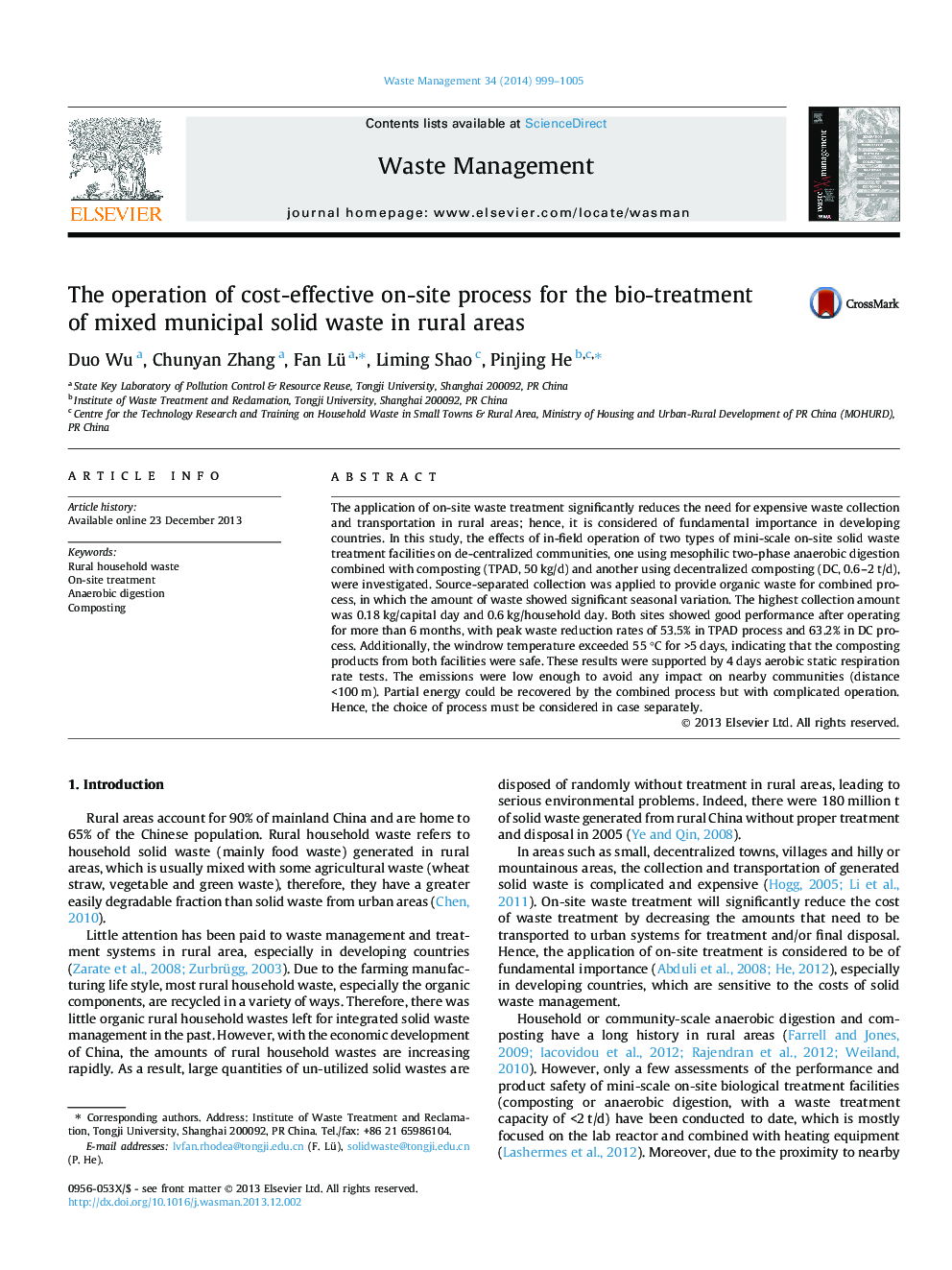| Article ID | Journal | Published Year | Pages | File Type |
|---|---|---|---|---|
| 4471620 | Waste Management | 2014 | 7 Pages |
•Successfully operating decentralized on-site treatments for 6 month.•Source-separated collection was successfully applied in rural areas.•The products of the mini-scaled on-site treatment were safe and stable.•The waste treatment had no impact to nearby communities.•The appropriate scale of on-site treatment facility was discussed.
The application of on-site waste treatment significantly reduces the need for expensive waste collection and transportation in rural areas; hence, it is considered of fundamental importance in developing countries. In this study, the effects of in-field operation of two types of mini-scale on-site solid waste treatment facilities on de-centralized communities, one using mesophilic two-phase anaerobic digestion combined with composting (TPAD, 50 kg/d) and another using decentralized composting (DC, 0.6–2 t/d), were investigated. Source-separated collection was applied to provide organic waste for combined process, in which the amount of waste showed significant seasonal variation. The highest collection amount was 0.18 kg/capital day and 0.6 kg/household day. Both sites showed good performance after operating for more than 6 months, with peak waste reduction rates of 53.5% in TPAD process and 63.2% in DC process. Additionally, the windrow temperature exceeded 55 °C for >5 days, indicating that the composting products from both facilities were safe. These results were supported by 4 days aerobic static respiration rate tests. The emissions were low enough to avoid any impact on nearby communities (distance <100 m). Partial energy could be recovered by the combined process but with complicated operation. Hence, the choice of process must be considered in case separately.
